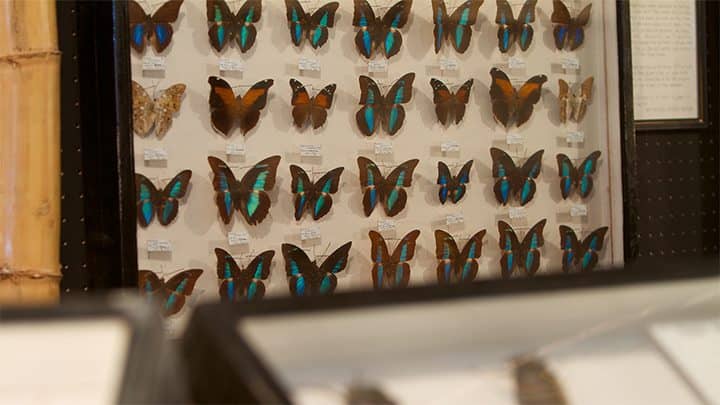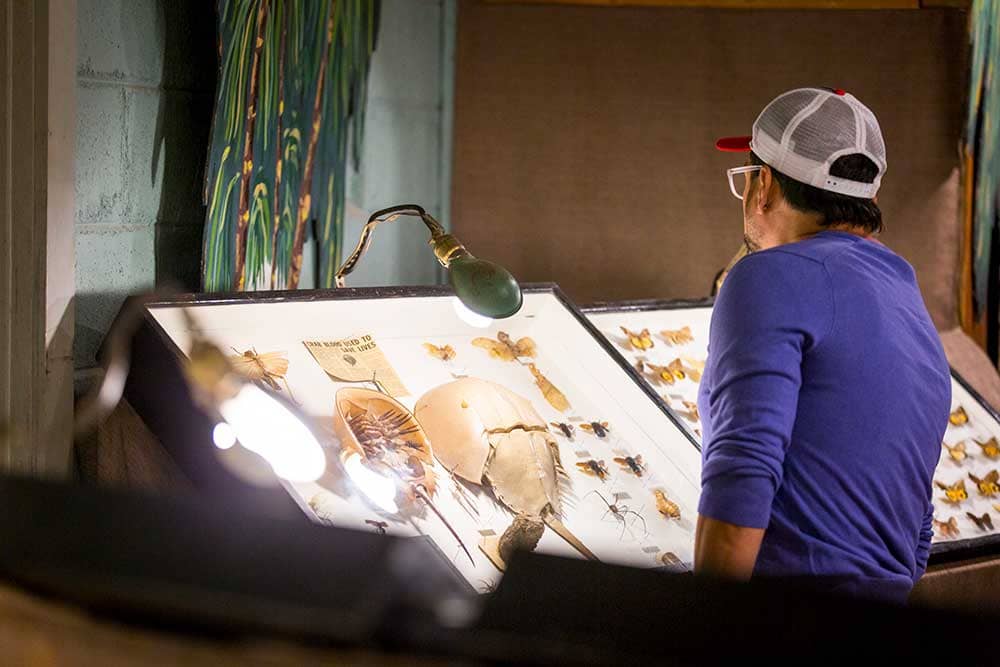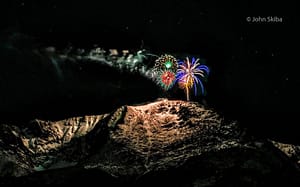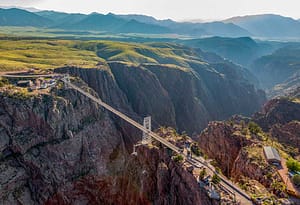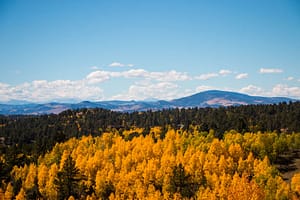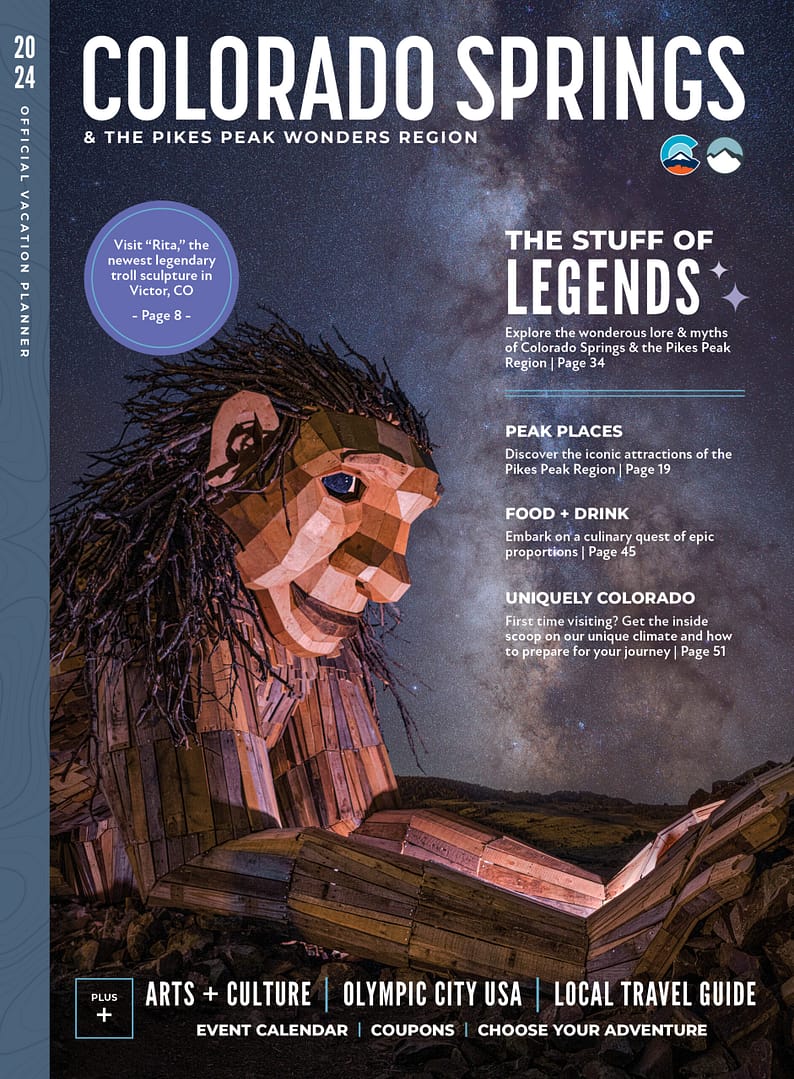May Museum of Natural History: The “Bug Museum”
From the moment you make the turn onto the road to the May Natural History Museum (under the watchful gaze of the world’s largest beetle), you know you’re about to discover something truly extraordinary. Located just south of Colorado Springs, the “Bug Museum,” as local school kids call it, is truly a legacy within a legacy. Not only has it been a popular destination for locals and Colorado visitors for more than 70 years, but the contents within the museum have been a part of history for much longer.
The popular roadside museum represents the life’s work of insect collector James May and the ingenuity of his son, businessman and fellow collector, John May. Thousands of bugs, spiders, moths, flies, bees and walking sticks line the walls and fill row after row of custom-built cases. Even more are stored for their chance to shine, or to protect them from falling apart from age. Popular with Colorado visitors, locals, families and school kids on field trips, the May Museum has been a favorite place for unique fun since the founding family first put down roots in the early 1940s.
The Days of the Mays
To say James was a prolific collector would be an under-representation of his dedication. He captured and preserved thousands of specimens from all over the world, with some insects dating back to the late 1800s. The May website boasts a collection of over 7,000 insects. As they so succinctly put in, “that’s a lot of bugs!” James didn’t build his collection alone for long, though. When one of his three sons, John May, showed interest in collecting, the boy began helping his father. John May excelled by his father’s side, but his real ambition was to help his family thrive financially.
John knew that other people would pay good money to witness the strange and unusual insects that made up the microcosmic ecosystems that support our planet. After all, world travel wasn’t exactly easy, accessible or affordable for the average American at the time. The first World War and the Great Depression had crippled the U.S. economy and there was no option or time for a regular Joe to catch a red eye to the tropics to find cool beetles. John brought the world to them. He developed a traveling bug museum he could take on the road, designing specialized cases and getting the whole family in on the endeavor. Did we mention John was a teenager at the time?
The Mays traveled the country sharing the collection with curiosity seekers. John May got married during the family’s travels and subsequently had three daughters with his wife, Vicky. The girls also joined the family business. Traveling took its toll on the clan. It wasn’t easy to haul three kids around the traveling attraction circuit, nor was it easy to haul cases through harsh climates that could destroy the specimens. They settled in the arid climate of Southern Colorado and began to build their legacy.
The May Insect Collection: The Last Remnants of Lost Worlds
James May developed one of the largest private collections on the planet — the keyword here being private. At large museums there is a staff to maintain the collection and a portion of thousands of dollars in donor and visitor funds allocated to preservation and display. The May Natural History Museum has a microscopic fraction of the staff to maintain the collection, change out displays, greet guests, lead field trips and manage upkeep of the buildings and grounds. The family’s other business (an entrepreneurial spirit seems to be genetic), Golden Eagle Campground, helps the museum stay afloat. In a Colorado Springs Gazette article penned in 2017, Steer is quoted as saying, “If money’s your motivation, this isn’t gonna work for you.” Despite the fact that the museum doesn’t rake in massive amounts of money, the family has worked hard to open it season after season. The mission is that meaningful.
If you want an idea of how worthy of effort to maintain this museum is, consider this fascinating fact — Walt Disney was so enamored with the exhibit that he tried to buy it for a display in Disneyland in California. Disney visited the museum with his wife in the summer of 1956 and made an offer to bring it back home. You have to have something pretty impressive to entice the creator of iconic cartoons and world-famous amusement parks into coveting your collection. The May Museum had it … and kept it for themselves.
While the collection may not generate Disney levels of revenue from its comfy canyon home, it is extremely valuable. In an episode of the documentary show “Strange Inheritance,” R.J. Steer, grandson of John May and great-grandson to James May, noted that the collection was assessed at between $5-$6 million. You might be asking; how does a collection of preserved bugs net so much money? For that, you’d have to take a deep dive into the truest value of the collection — it’s link to an ecological past that would otherwise have been forgotten.
“The collection cannot be replicated,” says Steer. Many biomes where specimens were collected do not exist now.” That means you will see bugs that are now extinct and may have been for decades. Some are from places that are now filled with homes and shops or eradicated due to agriculture. Many are the only evidence we have that they ever existed at all. In that respect, the collection is priceless.
Steer and his sister Carrie York both gave up their own individual careers to keep the legacy alive. As Steer put it in the same Gazette article, “I could not bear to see this disappear.” Their mother, Louise, spent her own childhood helping her father keep the museum operating and the campground (which he added to help support the museum and provide steady income for the family).
York transitioned the campground into the digital age, giving campers the option to register online instead of calling on the phone. The sites and property has improved with modern hook-ups and larger spaces to accommodate the larger vehicles that dominate campgrounds today.
As for the museum, it’s pretty hard to improve on perfection. After all, the business concept has survived for a century. Who wouldn’t want to see some of the world’s scariest creatures up close but safely under glass? Steer does think the museum may expand slightly in the future. They hope to show off the touring caravans that carried their family out of the Great Depression and into Colorado history.
